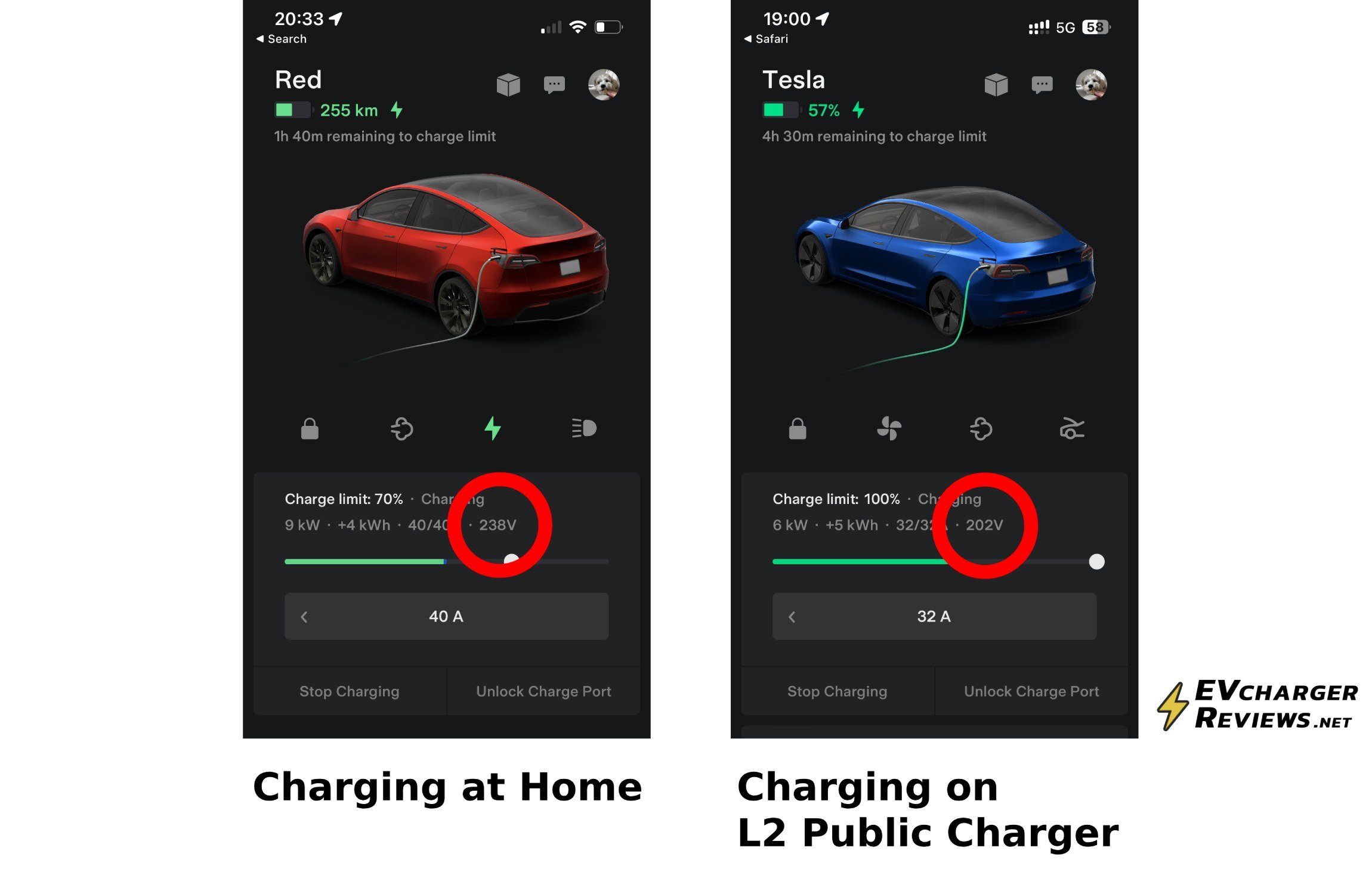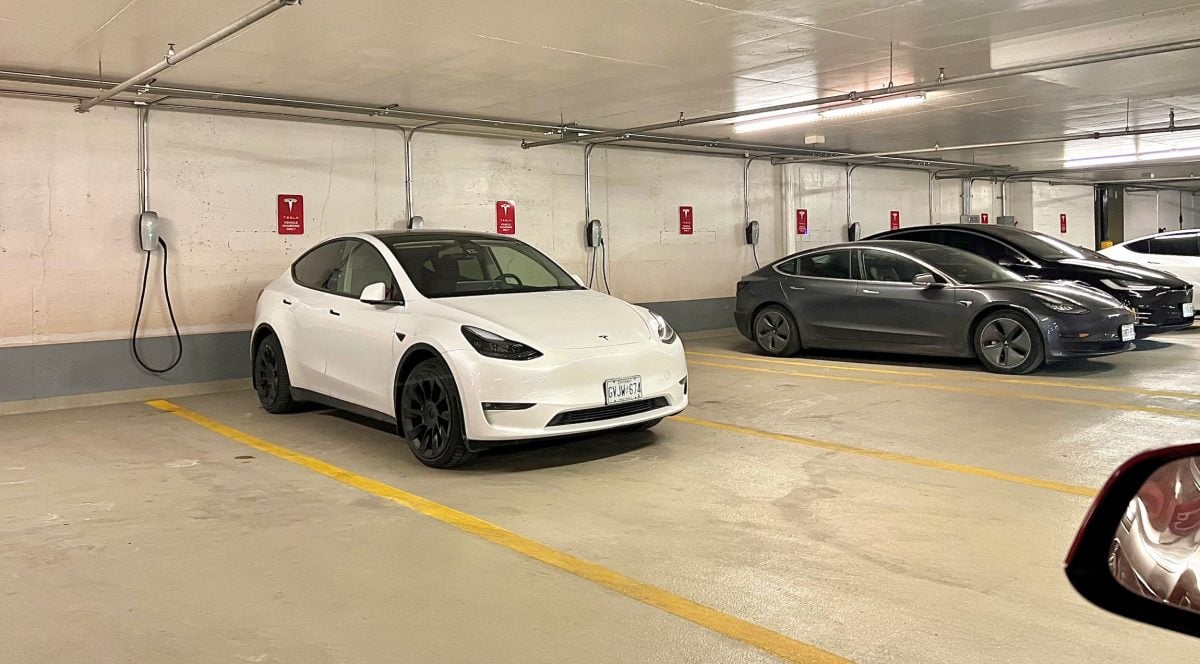Level 2 EV charging is done at 240 volts in North America, using the same high voltage as power-hungry home appliances like air conditioners and laundry dryers. But as a seasoned EV driver, you may have noticed something odd, why does charging voltage hover around only 208 volts on public Level 2 charging stations? Yes, voltage tends to “sag” a bit when the circuit is under a heavy load, but the difference should only be a few volts on a healthy circuit. Right?

The reason public Level 2 charging stations have lower voltage is due to differences between how residential and commercial properties are supplied by the electric utility. In the USA and Canada, residential homes are supplied by 240-volt single-phase power from the street to the electrical panel. This single phase is further split into half phases for regular 120-volt appliances, while the EV charging station gets the full 240 volts. In my own home, the EV charging stations operate between 235-242 volts depending on how much total load is active.
240 Volts vs. 208 Volts
Electrical service for commercial properties operates differently. They have access to three-phase power from the electric utility. While light commercial properties have access to 120 & 208 volts, large facilities are also supplied with 277 & 480 volts. If you are interested in the highly technical details, I recommend reading this guide to electrical service voltages from Continental Control Systems, LLC. But the main takeaway is that most public Level 2 charging stations will tap into the 208-volt power on commercial properties, which is significantly lower than the 240-volt you’ve got at home. When several EVs are charging at the same time, the voltage can sag down to nearly 200 volts or lower. This is perfectly fine for the charging station, and the onboard AC charger in your electric car can operate on a range of voltages safely. However, lower voltages result in slower charging speeds because power is a function of volts and amps.
Many public charging stations offer 32 amps of current, and if the commercial voltage is 208 volts, you can only expect to receive 6.665 kW of power. Meanwhile, a 32 amp charging station on a residential 240-volt supply would generate 7.680 kW. That is a whole extra kilowatt, and several extra miles of range added per hour.

